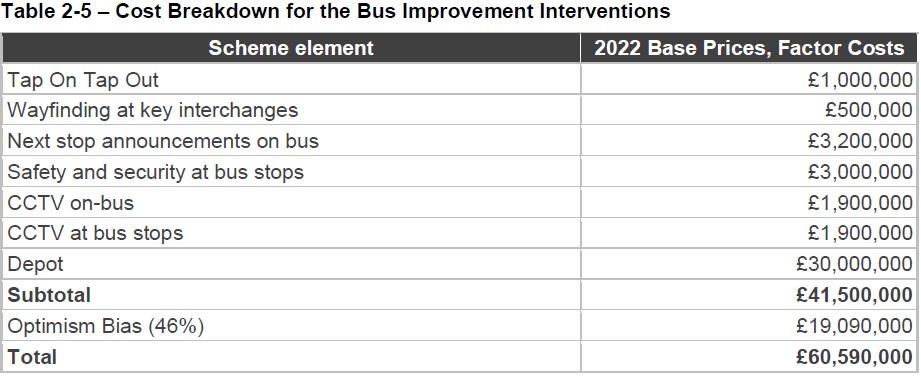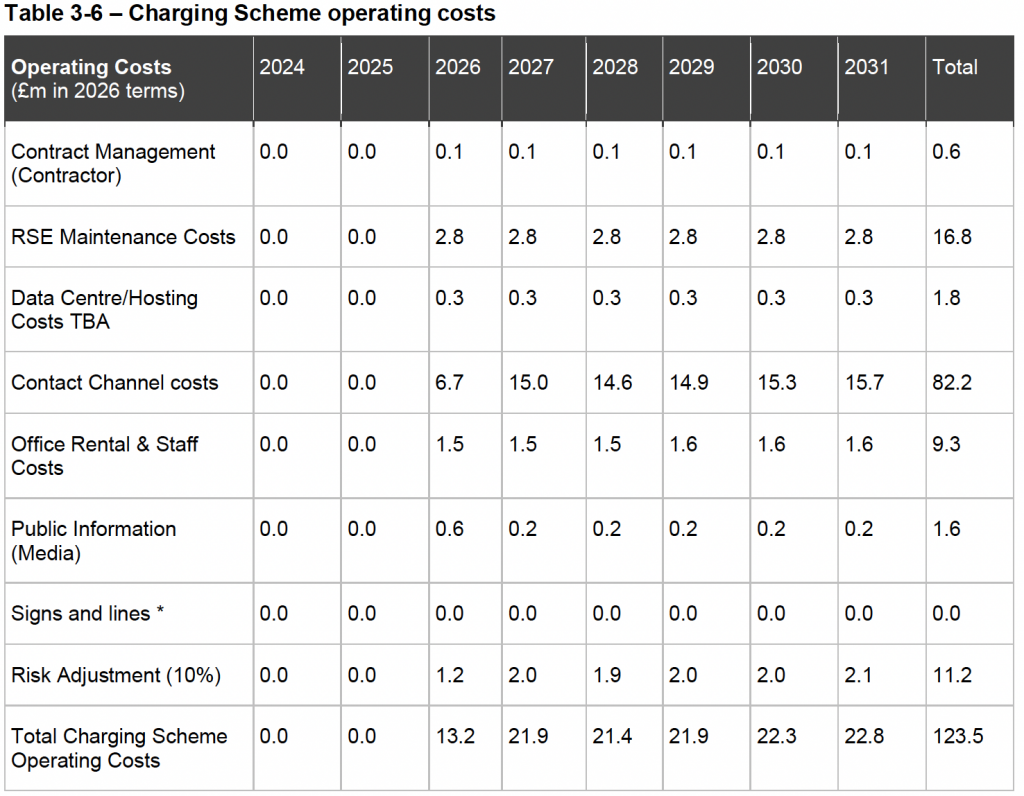The Greater Cambridge Partnership (GCP) salesman’s brochure provides all the beautiful things that will happen. But, unfortunately, at no point does it mention how much it will cost to build, operate, and maintain over the years.
Enter the Strategic Outline Case (SOC), which has some numbers.
Before we delve into the figures, a question for you.
You go into a shop and ask to buy a TV, and the ticket says it costs £100. So you go to pay, and they ask you for £168. You question this, and they say they need the extra £68 to let you have the TV for £100.
That £68 will never be seen again.
Would you still pay £168 for the TV worth £100?
If you said yes, probably best you leave now. No further questions are asked, and everything is fine.
If you said no, you might wonder what the question was about. How does it relate to the GCP’s STZ proposals?
It’s simple: subsidising the GCPs London Style bus service costs £31,500,000 (£31.5 million) a year. So to raise that, they propose introducing a charging system that costs £21,500,000 (£21.5 million) to operate.
The cost to run the GCP London Style buses has a 68% uplift, as the STZ has to pay for its running costs and subsidise the bus network.
Do you consider it Sustainable, or simply good value, to pay an extra 68%? Minimum. In perpetuity.
To be fair to the GCP, in 2030, they reckon it will cost £44m to subsidise the buses. So if the running costs are the same for the STZ, it’s only a 49% uplift. Though that seems less outrageous, remember this extra £12.5 million will be raised by increasing the STZ charges.
But wait, I hear you cry; the STZ is way more than just a means to fund the buses. No, it isn’t. The whole premise of the STZ is to support a London Style bus network in Cambridge and the wider surrounding area. Traffic levels in Cambridge are reducing, as is air pollution. The Council’s own data show that.
Maybe it is best to think of this in terms of VAT, and the GCP is proposing the run the buses for you for £31.5 million a year, but that is ex VAT. Only in this case, VAT isn’t 20%. It’s 68%. Think about that for a minute.
Does the GCP believe it is sustainable to ‘waste’ £21.5 million a year on running costs to generate £31.5 million in usable income?
So how much does it cost to build the STZ?

A snip, just over £23 million to build it. You may be wondering what the Optimism Bias is. Many of you will not have heard of that. Simply put, this is a multiplier used to defend against project overspends. It was created by the HM Treasury long ago in the Green Book. The Green Book is guidance issued by HM Treasury on how to appraise policies, programmes and projects. It is snappily titled “Uncertainty, Optimism Bias and Risk”.
Specifically, Optimism Bias “is to provide a more realistic assessment of the initial estimates of costs, benefits and time were taken to implement a project.”
With it so far? For a project such as the STZ, the recommended starting point is a bias of 200%. So you get the figures you thought everything would cost and add 200% to it. After all, everyone knows how well large-scale IT projects are managed. In the SOC, they believe they need to apply 46%, which is low for an IT project. The STZ is a combined IT and physical infrastructure project, as there are lots of ANPR cameras to install, secure networks to build, payment processing, administrative systems to put in place etc. 46% is an impressive figure. Some detailed behind-the-scenes number crunching has gone on there. No doubt, when the Outline Business Case (OBC) comes along with the Final Business Case (FBC), the GCP will have accurate numbers. If they go up, so do the charges in the STZ. The only other congestion scheme in the UK is London, so perhaps they took a subset of the London costs? Note the London charge has risen 300% since it went in.
Let us not forget this is only half the picture. We also need to provide startup costs for the bus operators too.

The £60.5 million is for GCP to equip the current bus fleet with the technology to provide a “London Style bus network”. Not any of the new buses, to re-equip the current fleet (that will need to be replaced by EV buses), new bus stops, signage etc.
It does include £30 million for a new bus depot, which is a welcome thing. About 170 buses run the current network (even if many don’t have drivers), and the SOC reckons another 130 buses will be needed. So the GCP has a nice round number of 300 buses that must be put somewhere. These new buses, and the old buses, will all eventually be fully electric. Each will take some 3 to 5 hours to charge. So the depot will need to be somewhere with an excellent connection to the electricity grid.
The Optimism Bias used here is the same as that for creating the STZ. Even though it is done with more physical installation work, including that on buses the council doesn’t own, that is impressive number crunching or cut and paste – who knows?
So, we’ve now spent £83,754,000 (£83.7 million), hopefully not any more. So that gets us to the start of the journey.
Now have to keep this machine running. We can skip over the small change of the maintenance and renewal costs of the STZ, as they are a mere £3 million until the end of the decade. Small change.
The GCP calculate the direct operating costs for the STZ are provided here.

The numbers are in millions, just in case you thought you could get change from a £50 note each year.
The buses have operational costs too, though they don’t seem to start until 2026 once the STZ is up and taxing, so can finance buying the additional bus fleet. How that is done is a whole other musing, as it could involve franchising ala London or partnerships with bus companies, such as the current model.

Probably best to ignore the £2.6 billion figure and just let the £31.5 million a year until 2029 sink in. But, before it jumps to £44 million in 2030 onwards, can you guess what will happen to the STZ charge in 2030 to raise an additional £12.5 million a year?
So there are the numbers, £83.7 million to get it all going. £53 million a year to keep it running, of which £21.5 million is just to keep the ANPR cameras rolling.
And now for something completely different; if you got this far, you might as well read the next bit too.
The GCP tell us that you, the public, have overwhelmingly asked for these new services. If we really want this, could it be done any cheaper?
